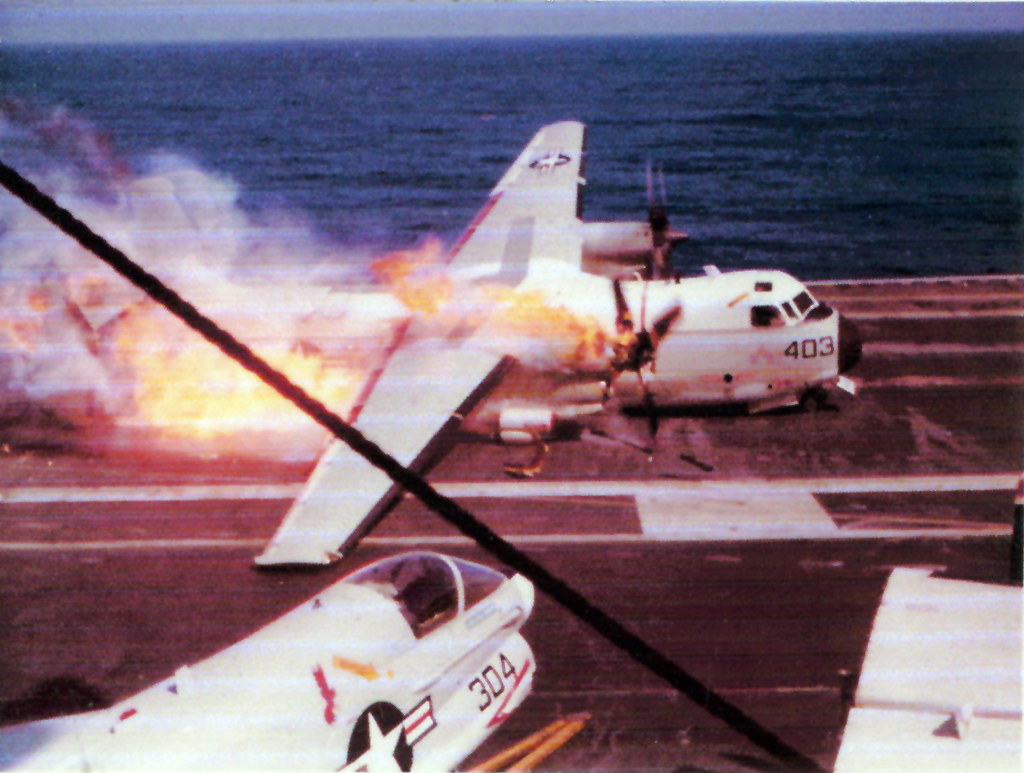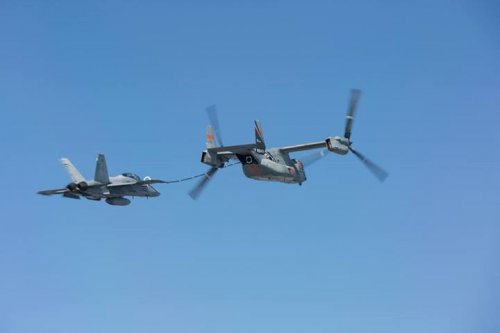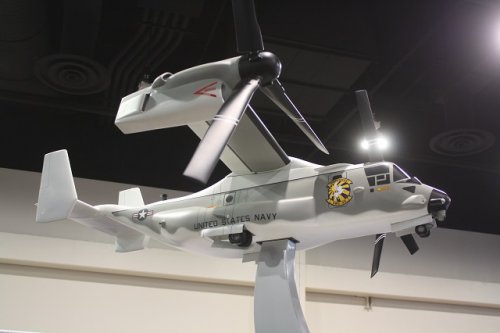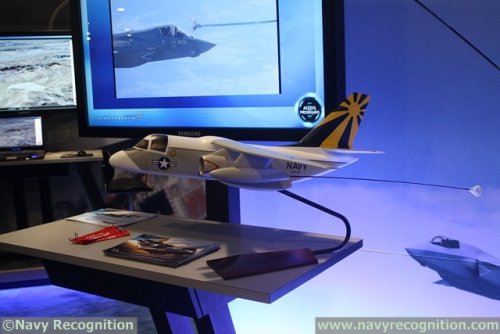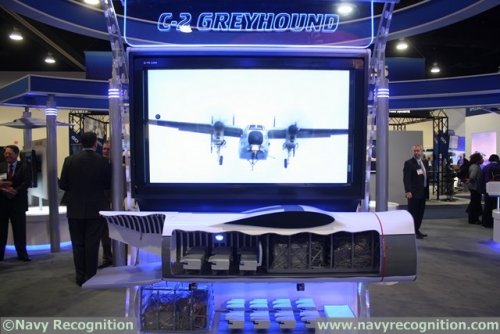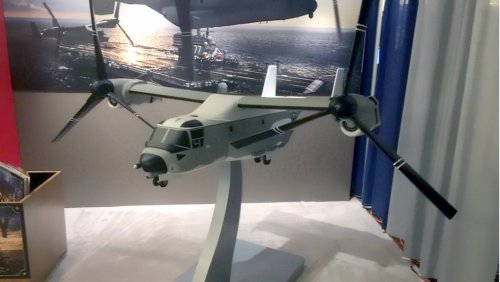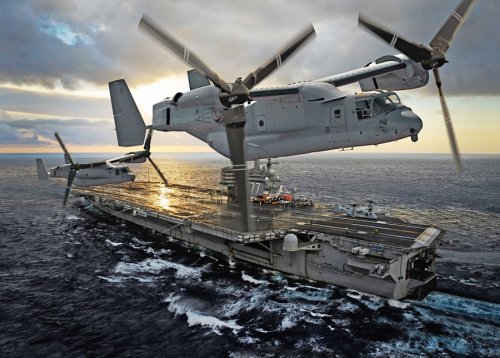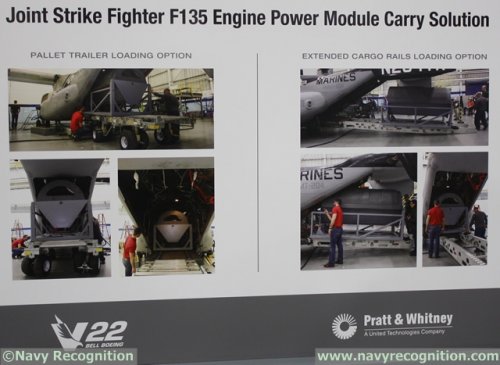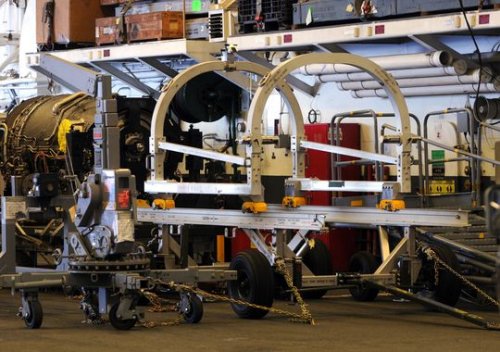Will the Navy buy the Bell-Boeing V-22 to replace the Grumman C-2 Greyhound?
"Osprey on the Truman, Fishing for COD"
Posted by Amy Butler 2:16 PM on Apr 18, 2013
Source:
http://www.aviationweek.com/Blogs.aspx?plckBlogId=Blog:27ec4a53-dcc8-42d0-bd3a-01329aef79a7&plckPostId=Blog:27ec4a53-dcc8-42d0-bd3a-01329aef79a7Post:ee72908b-a786-455f-8510-c35b64849f10
"Osprey on the Truman, Fishing for COD"
Posted by Amy Butler 2:16 PM on Apr 18, 2013
Source:
http://www.aviationweek.com/Blogs.aspx?plckBlogId=Blog:27ec4a53-dcc8-42d0-bd3a-01329aef79a7&plckPostId=Blog:27ec4a53-dcc8-42d0-bd3a-01329aef79a7Post:ee72908b-a786-455f-8510-c35b64849f10
The MV-22 Osprey is preparing to take a major step in the program's quest to garner more customers outside the U.S. Marine Corps and the Air Force special operations community.
The aircraft is onboard the deck of the carrier USS Harry S. Truman in preparation for trials to validate whether it is suitable to be considered as a replacement for aging C-2 Greyhounds.
The first phase of the assessment Starts April 19, when operators will be “conducting palletized cargo and cyclic operations” using the MV-22 on the Truman’s deck, says Rear Adm. William Moran, Navy aviation chief. This will include transfer of passengers, cargo and “cyclic flight operations.
Moran says that officials need to assess whether they can properly “stuff and unstuff” the MV-22 in line with the operations tempo of the carrier air wing, Moran told Aviation Week following testimony before the House Armed Services airland subcommittee hearing April 17.
Later in June, the assessment will enter a second phase whereby Navy operational testers will assess the aircraft’s integration into “cyclic operations” on deck for six days. This will be crucial, as the V-22 cannot be allowed to slow the fast pace of operations on deck if it is to be a contender for the COD mission.
Currently, the V-22 and an upgraded C-2, managed by Northrop Grumman, are the two options for the future COD mission. Moran says that after the assessment is complete, the Navy will determine whether the MV-22 can compete. If so, a competition is not likely to be funded until the release of the Fiscal 2015 budget proposal at the soonest.
If V-22 is not suitable, then the Navy will then go through the process of justifying a sole-source purchase of Northrop’s upgraded C-2 aircraft; these would share some common parts to the E-2D Hawkeye surveillance aircraft.
Northrop Grumman officials boast that this commonality is a plus for the aircraft, as it is already capable of maneuvering and parking on the deck with ease. They plan to add the E-2D’s T56-427A engines to the upgraded C-2, as well as new wings, digital avionics and an empennage common with the Hawkeye.
Company officials claim that the modernized “C-2A Greyhound will be half the total ownership cost of any other carrier on-board delivery solution.”
Further, they say, the process of loading and unloading cargo and passengers has been well established by the predecessor C-2A. And, they note the cabin would be pressurized, an upgrade that would need to be added to the V-22.
V-22 backers don’t see this as a problem, though, and are not currently planning to offer a pressurized cabin. ”The V-22’s 25,000 ft .service ceiling is similar to other turbo-prop aircraft. Passenger flight operations are routinely conducted in the 8,000 to 12,000 mid-altitude ranges where the aircraft operates most efficiently,” says Bill Schroeder, a Bell-Boeing spokesman. “Unpressurized Navy passenger flights are cleared up to 13,000 ft.” He adds that the Block C weather radar, ice protection system and avionics support flying in all-weather/day/night conditions and air conditioning can be used on long flights for passenger comfort.
The V-22 aircraft is capable of operating on the decks of smaller ships (though some certifications remain), allowing for cargo to be directly delivered to them from ashore. Using the C-2, the Navy employs a hub-and-spoke system whereby cargo is shipped to large deck carriers and then hauled by helicopter to smaller ships in the carrier group.
V-22 proponents say that direct delivery of personnel and cargo could garner savings from the current operational concept.
Both contractors say that parts and service would be low cost owing to the presence of like aircraft in the fleet. However, neither company has provided concrete cost data for public consumption.
Moran says the Navy has completed an analysis of alternatives to review options for the mission. The COD aircraft in service now are suitable until the late 2020s unless an unforeseen problem crops up, he says.

